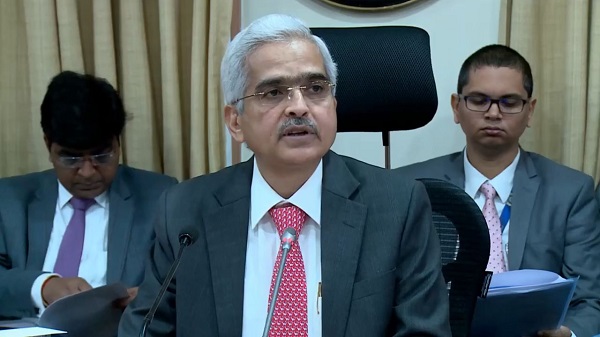Mumbai, At the Reserve Bank of India’s (RBI) Monetary Policy Committee (MPC) meeting earlier this month, RBI Governor Shaktikanta Das had pointed to clear evidence of economic activity losing traction while presenting the rationale for a rate cut, as per the minutes of the MPC meeting released by the central bank on Thursday.
In its second monetary policy review of the current fiscal earlier this month, the MPC had cut the RBI’s repo, or short term lending rate for commercial banks, by 25 basis points to 5.75 per cent from 6 per cent.
Taking note of the significant weakness of growth impulses and expressing concern over the “sharp slowdown” in investment activity, all the six members of the MPC voted for the rate cut.
Chaired by the RBI Governor, the MPC includes Chetan Ghate, Pami Dua, Ravindra H. Dholakia, Michael Debabrata Patra and Viral V. Acharya as its members. While Patra is an Executive Director of the central bank and Acharya is an RBI Deputy Governor, the others are external members of the MPC.
“All members of the MPC unanimously decided to reduce the policy repo rate by 25 basis points and change the stance of monetary policy from neutral to accommodative,” the MPC minutes said.
“Overall, there is clear evidence of economic activity losing traction, with the GDP growth in Q4 (fourth quarter) 2018-19 slowing down to 5.8 per cent,” Das said, as per the minutes of the MPC meeting.
Das also noted that “growth impulses have clearly weakened”, while the headline inflation trajectory is projected to remain below 4 per cent throughout 2019-20 even after considering the expected transmission of the past two policy rate cuts.
Growth has seriously dipped and can recover relatively fast on policy support though it is likely to remain well below the potential at least for next three to four quarters, Dholakia said.
Patra said that India cannot afford to be complacent about the danger of a deepening of the global slowdown.
“Intensification of trade wars and geopolitical tensions amidst volatile crude prices and nervous financial markets render the outlook fraught with downside risks,” Patra added.










